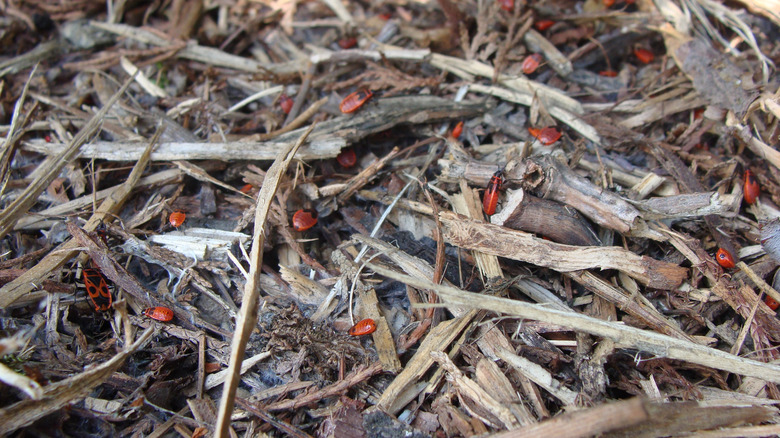Discoloring, yellow, or brown turf patches are all too common during hot and dry weather, especially if you’ve been doing a shoddy job of caring for your lawn. But not all strawy-looking blades are explained by water stress— bugs can turn your grass brown, too. Chinch bugs are grain-sized insects that love feasting on thick clumps of highly thatched lawns, particularly cool-season grasses like Kentucky bluegrass, red fescue, and perennial rye, leaving them dry and damaged. Banish them by adequately watering, aerating, dethatching, and fertilizing your garden. While these tasks should take care of small infestations, you’ll have to treat more severe bug invasions chemically.
While happily zapping sod of its sugary sap, chinch bugs inject an anticoagulant into the grass to block all water and food access, leaving it purple. The area eventually wilts and dies, turning your almost $4,000 sod investment into ashes. So, reining in the vicious suckers immediately is essential. But before you draw a control plan, there are some tell-tale signs to look for.
Tiny bugs that can cause turf injury

Your first sign to check for chinch bugs is if your lawn is steadily turning yellow, regardless of ample watering. The damage usually starts as a 2- to 3-foot-wide patch in the sunniest spots or around the garden sidewalks and driveways and solidly stretches across the yard as the ferocious insects chew through the blades.
When you carefully inspect the thinning, brown spots — perhaps with a magnifying glass, given their hard-to-see petite 3/16-inch frame — you might find white-winged, black bugs or tiny orange nymphs wading past and lapping the grass. These bugs showcase distinct white stripes and triangular blocks on their backs and smell musty when crushed. Make sure to examine the dry soil when temperatures exceed 75 degrees Fahrenheit to get the best idea of whether or not you have an infestation.
If you don’t want to get down and dirty, you can use the floating or coffee tin method. Bottom out a coffee container and plant it about 2 inches deep into the ground. Fill it up to 70% with water and sit tight for 10 minutes. If bugs float up, it’s a sign of a problem. Make sure to also repeat the test in the surrounding area to double-check if the bugs have spread.
Controlling and eliminating chinch bugs
To catch early swarmers in action, rake and vacuum around 24 inches of the yellowing grass and then water it. Make sure to also remove any thatch and debris build-up, since it provides an overwintering site for the chinch bugs. Irrigate your lawn once a week (twice if sandy) unless it rains. Also, make sure to keep on top of your mowing and fertilization to prevent further bug infestation. And while this might sound counterintuitive, you can bring in beneficial insects like big-eyed bugs, lacewings, ladybugs, and ground beetles who feed on chinch bugs.
If all else fails, you can treat the site with insecticides containing pyrethroid, bifenthrin, trichlorfon (Dylox), or carbaryl. However, as the chemicals don’t harm insect eggs, you may need to reapply them to kill the newly hatched nymphs. For those iffy about chemicals, spot-treat the infested grass with natural products like diatomaceous earth and insecticidal soaps.